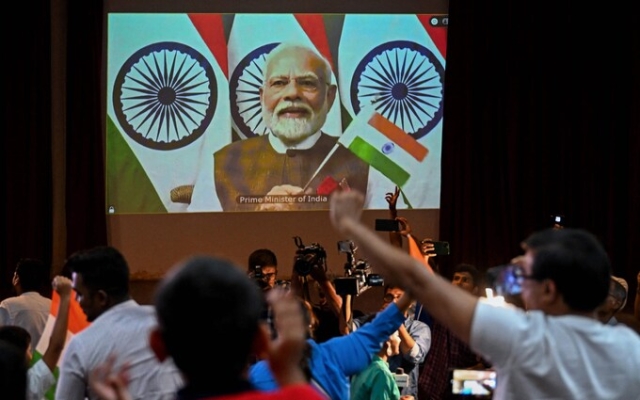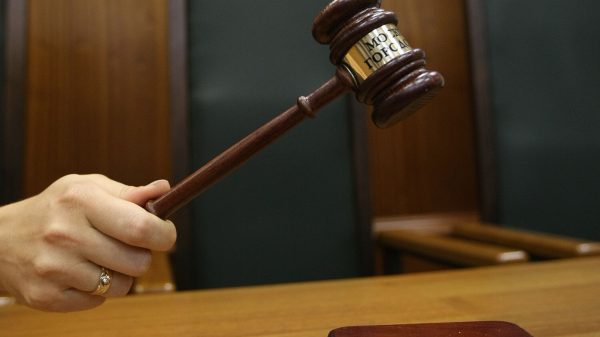 Prime Minister Narendra Modi congratulates the Indian Space Research Organization for the successful landing of the Chandrayaan-3 spacecraft at the south pole of the moon. Credit : Puneet Paranjpe/AFP
Prime Minister Narendra Modi congratulates the Indian Space Research Organization for the successful landing of the Chandrayaan-3 spacecraft at the south pole of the moon. Credit : Puneet Paranjpe/AFP
India has just kicked off the race for resources on the moon.
Not since Roald Amundsen cabled Captain Scott to warn him: “On Madeira. Going south, was there such a frenzy to reach the south pole?
While the Antarctic wastelands proved fatal to Scott, the moon's south polar region is key to sustaining life, as it likely contains vast amounts of frozen water.
Control of such a resource, which can also be converted into rocket fuel, will be vital to building bases on the Moon, a key goal for many space agencies in the next decade.
The US is aiming to be the first country. to land astronauts on the south pole of the moon in 2025, and China has pledged to send astronauts by the end of the decade.
 People celebrate the successful landing spacecraft «Chandrayan-3» at the south pole of the moon. Photo: Arun Sankar/AFP
People celebrate the successful landing spacecraft «Chandrayan-3» at the south pole of the moon. Photo: Arun Sankar/AFP
Russia's attempt to land at the south pole ended in failure this week, and it's surprising that relative newcomer India got there first, giving the country an edge in hunting for water and other resources.
«The sky is not the limit,» Indian Prime Minister Narendra Modi said after the successful landing.
But the Chandrayaan 3 mission raises important questions about who owns the Moon, or any other space resource, and who should be allowed to exploit it.
Several countries, including the United States, Japan, Luxembourg and the United Arab Emirates, have passed legislation granting companies and agencies the right to extract resources.
Earlier this year, privately held Japanese company iSpace was to make its first commercial deal on the moon – sell moon dust to NASA – but the spacecraft crashed on landing.
Some states, including Russia, are unhappy with what they see as land grabs by individual countries and are calling for international rules to reign in the emerging economies of the «Wild West».
The current space law is this: it is not clear about the exploitation of resources .
The 1966 UN Outer Space Treaty states that “outer space is not subject to national appropriation by assertion of sovereignty, by exploitation or occupation, or by any other means.”
In addition, the 1979 Moon Treaty called for «an orderly and safe use of natural lunar resources, with an equitable distribution by all States Parties of the benefits derived from these resources.»
 Narendra Modi observes the Chandrayaan-3 mission
Narendra Modi observes the Chandrayaan-3 mission
NASA's Artemis Agreements, signed by 21 countries, including the UK, the US and Japan, but not Russia, confirm the possibility of mining and using space resources.< /p>
But the agreements also called for compliance with the Outer Space Treaty, which creates a controversial situation.
It is also not clear who will control any space offenses, what possible penalties could be, and if something would be feasible off-planet at all.
India could also face an ethical dilemma: spending millions to extract water from the Moon while struggling to provide water for hundreds of millions of its citizens back to Earth.
Obviously, all eyes are on the sky, and whoever wins the next decade's larger «water tide» will likely control the moon for much longer.
























































Свежие комментарии